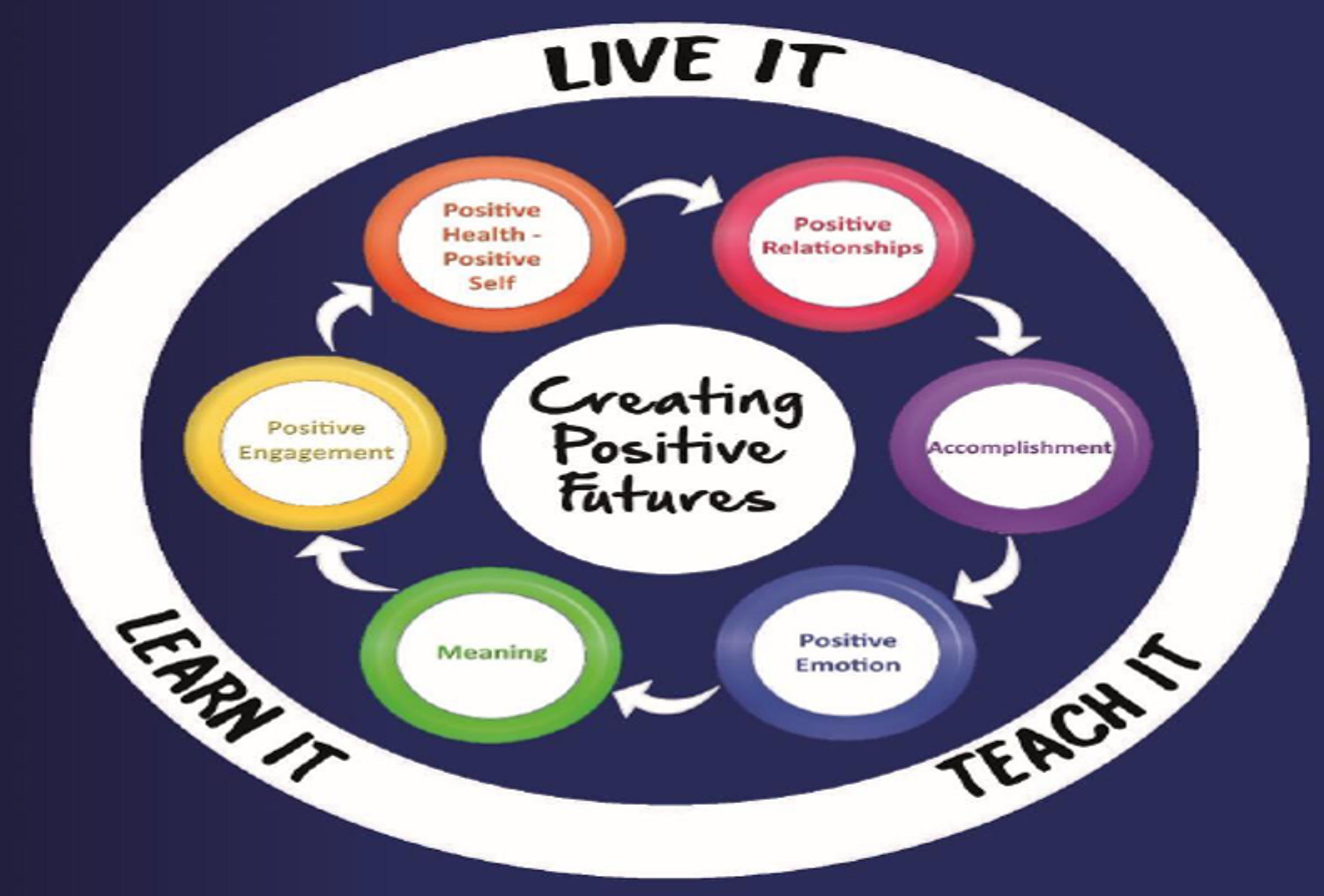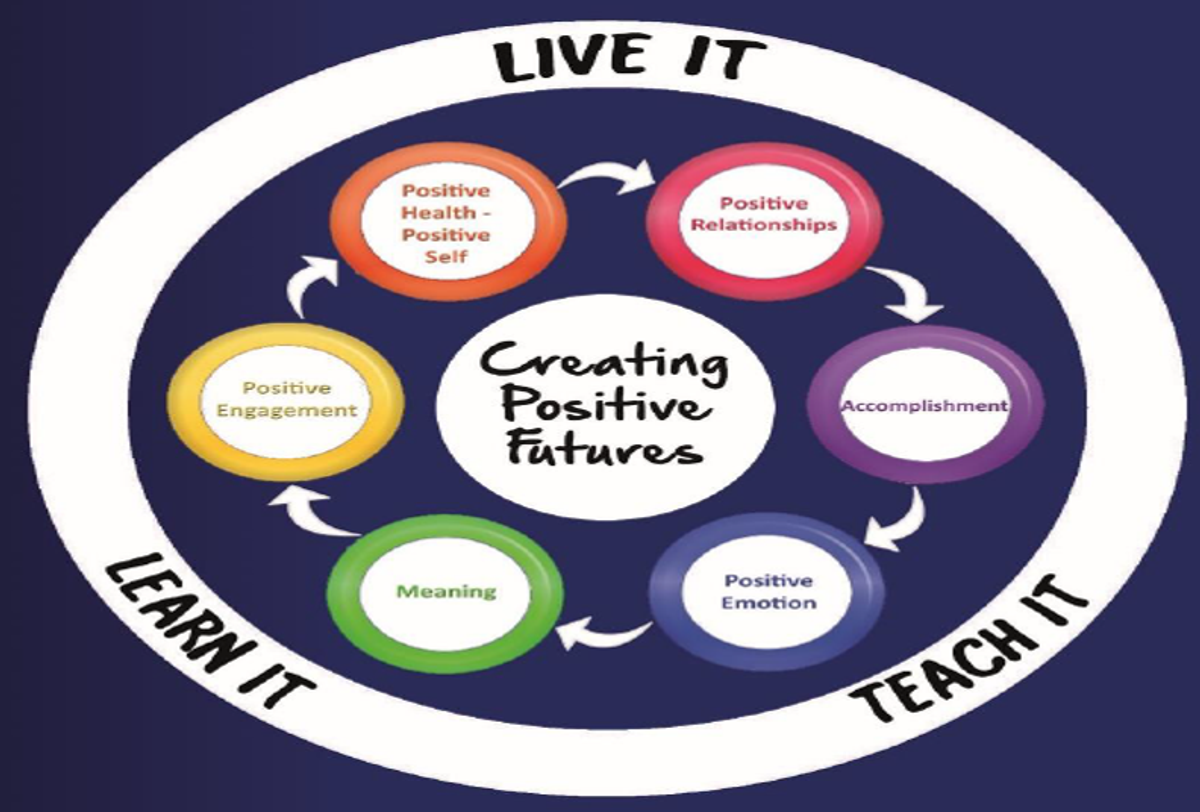
Positive Futures News
What is the EDSC Positive Futures program?
Positive Education brings together the science of positive psychology with best-practice teaching.
The school’s journey with Positive Education began in 2012 with Positive Education focuses and values implemented across each year level and over time has evolved into the whole school approach launched in 2020.
Our Positive Futures program has some very clear goals:
- We want to improve student quality of life and their engagement with others, including with their teachers
- We seek to develop students in a more holistic way, with a stronger focus on wellbeing
There are six tenets of Positive Psychology that are embedded into our model:
Positive Health – Positive Self
Developing knowledge, understanding and skills to promote health and well – being.
Positive Relationships
Nurturing positive relationships based on respect.
Accomplishment
Generating hope and optimism through the accomplishment of personal and community goals
Positive Emotion
Building and experiencing positive emotion.
Meaning
Believing in serving something greater than ourselves.
Positive Engagement
Developing critical thinkers by promoting challenge, curiosity and creativity.
More resources and information can be found here:
https://www.eastdonsc.vic.edu.au/wellbeing-engagement-positive-futures
Student Focus – Gratitude
At all year levels the students are focusing on Gratitude, Empathy and Mindfulness during Term 1 at some stage.
Here is an example of a Gratitude Activity that some students may have completed:
- Students can write a short letter to someone they are grateful for (friend, teacher, family member)
- Students to share someone they are grateful for - but as a twist, it must be someone they have not met in real life, or barely know (e.g. celebrity, historical figure, stranger on the bus who gave them a seat)
Year 7/10 Peer Support Program
Another exciting part of Positive Futures this year is the introduction of a Peer Support Program. The Year 10 students that have volunteered to be part of this program have received training with our Mental Health Practitioner Maddie Sill.
We had our first session on Tuesday and it was an amazing success. The Year 10s demonstrated kindness and compassion to our Year 7 students and it was great to see students playing games, going for walks and creating some amazing Gratitude Posters.
Student Planners – Use in Positive Futures
At the beginning of the year all students received an EDSC planner that is to be brought to all classes. You may notice that there is a substantial part of the planner dedicated to the Resilience Project. This has been specifically designed as a workbook for students at all year levels to use in Positive Futures. Therefore, it is imperative that the planner is brought to every Positive Futures lesson to be used to record notes, complete activities and explore the GEM model.
If your child has lost their planner, please contact the appropriate Sub-school for guidance in obtaining another one.
The Resilience Project is committed to teaching positive mental health strategies to prevent mental ill-health and build young people’s capacity to deal with adversity.
Teachers and students will engage in weekly lessons and activities around the key principles of Gratitude, Empathy, Mindfulness (GEM) and Emotional Literacy to build resilience.
Check out their website for more information:
And check out TRP@HOME; a place filled with inspiration and activities for the whole family, to help improve your wellbeing and build resilience.
Positive Futures Book of the Week
A Simple Act of Gratitude: How Learning to Say Thank You Changed My Life – John Kralik
In this personal and touching memoir, John Kralik describes how he went from an all-time low to a happy and flourishing life through the simple act of writing thank-you notes. During a particularly difficult time in his life, Kralik had an epiphany:
perhaps he would find life more manageable if he focused on what he did have rather than what he didn’t have.
He began his gratitude journey by setting a goal for himself: over the next year, he would write 365 thank-you notes, one per day. As he produced each handwritten note, he noticed profound changes occurring in his life. In A Simple Act of Gratitude, Kralik outlines a roadmap for anyone struggling to make similar changes in their life.
As the Amazon description says, “To read A Simple Act of Gratitude is to be changed.”
Rebecca James
Student Engagement & Connection
Learning Specialist



